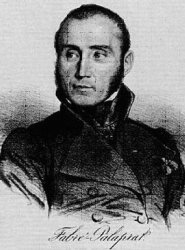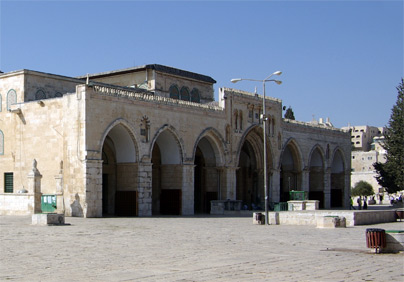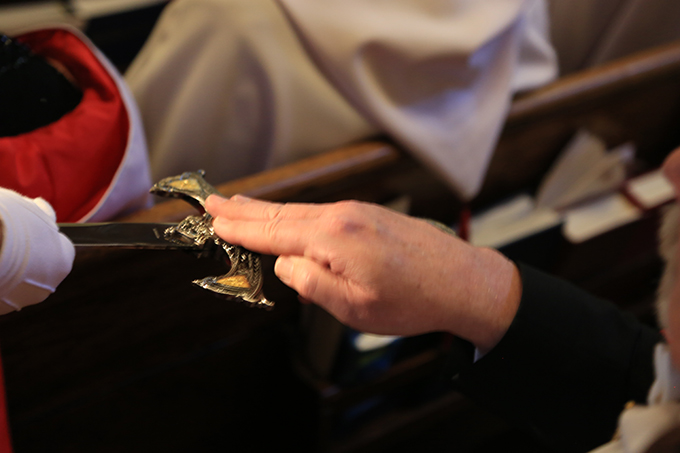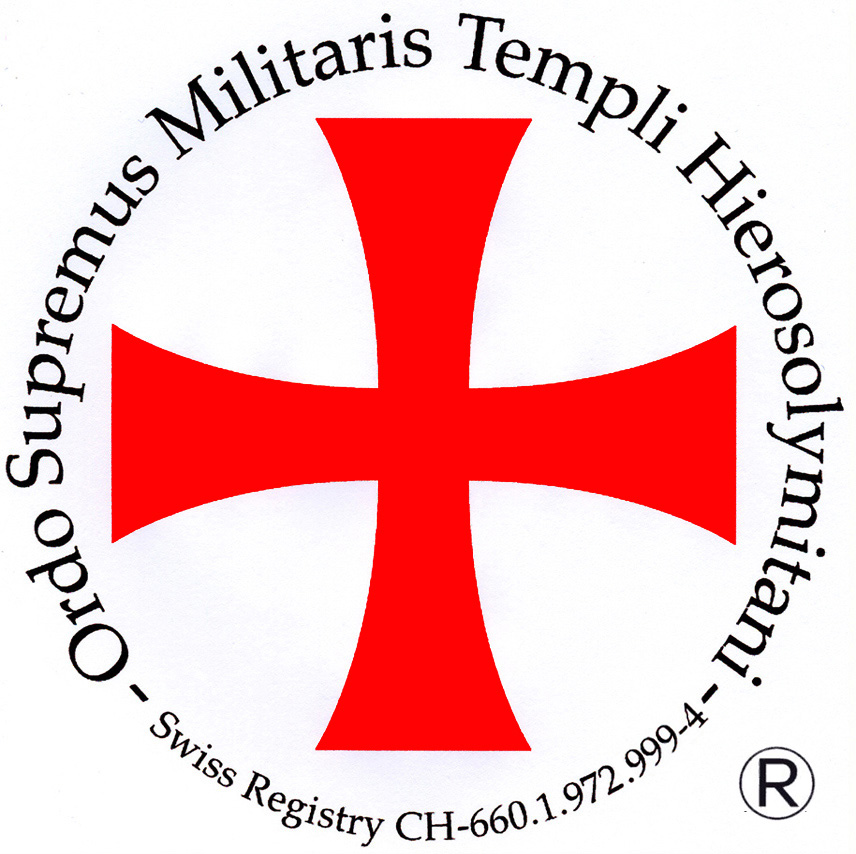|
 The Order of the Temple is a Christian ecumenical organization founded in 1804 by the physician Fabré-Palaprat with the support of Napoleon, and officially recognized in 1853 by Napoleon III. The Order operates on the basis of the traditions of the medieval Knights Templar. It reclaims the spirit of, but does not assert any direct descent from the ancient Order founded by Hugues de Payens in 1118 and dissolved by Pope Clement V in 1312. The Order of the Temple is a Christian ecumenical organization founded in 1804 by the physician Fabré-Palaprat with the support of Napoleon, and officially recognized in 1853 by Napoleon III. The Order operates on the basis of the traditions of the medieval Knights Templar. It reclaims the spirit of, but does not assert any direct descent from the ancient Order founded by Hugues de Payens in 1118 and dissolved by Pope Clement V in 1312.
Why the name? In the middle ages the two major knightly Orders were the Johannites (Order of Malta), with a hospitaller mission, and the Templars, whose role was to protect pilgrims in the Holy Land. Had this been the only role of the Templars, however, they would have been forgotten long ago. Because there was (to use a modern term) a demand for services, the Order of the Knights Templar quickly developed into a transport, banking and security network in which the best educated and motivated soldiers were ready for service. This Order was seen with favor by the Kings and Princes of medieval Europe, and of course they made use of its services. On the other hand, its increasing power and influence generated mistrust. The Order's contacts with the Islamic world became its doom, because they gave the Order's enemies an easy pretext to claim that the Templars had strayed from the one and true faith and had become heretics.
Fabré-Palaprat was a product of the Age of Enlightenment, with its humanitarian and humanistic ideals. The concepts of "Templar" and "Templarity" became for him a synonym of help and protection, decency, dedication and chivalrous behavior. He based his new Order of the Temple on these ideals. For these reasons, in the 19th century the Order counted among its members very prominent people and protectors in "alto loco." Given that the Order developed during the height of the Romantic period, the name of the Templars became associated also with the romantic mystical world in which the legends of the lost treasure of the Templars, the Ark of the Covenant, the Holy Shroud, the Holy Grail and the Rosslyn legends played a particularly prominent role.
With the death of Napoleon III the Order lost its strongest protector. Compounded with various wars that preempted any attempt of cohesion in the International Order of the Temple, the Templar movement disaggregated. Even today, there are dozens of groups that carry in some form the name of the Templars. The direct descendants of Fabré-Palaprat's Templars are, however, those Templars who have carried the name of Ordo Supremus Militaris Templi Hierosolymitani (where "Supremus" is sometimes translated imprecisely as "Sovereign") since 1932. But even this group has been divided in at least three distinct and often rivalling factions.
In 1995, the majority of OSMTH Templars (mostly grouped in the Grand Priories of Austria, France, Italy, Finland, England & Wales, Scotland, NATO and the USA) assembled in the Austrian town of Salzburg and democratically adopted several resolutions to restructure and modernize the Order.
|
|
One of the landmark decisions was to withdraw recognition from the Regent of the Order, Fernando de Sousa Fontes, because of mismanagement and irregular conduct. (Those few who refused to abide by the democratic decision are presently known as OSMTH-Regency.) The present OSMTH is therefore the largest and best organized Templar group to date. It is an apolitical, not-for-profit organization registered in Geneva, Switzerland, under Federal Registry number CH-660.197299-4.
Each grand priory is patriotic, being committed to the betterment of the host country. Our Order is devoted to the preservation of Liberty, which is essential to freedom of conscience and religion for all and to the efficient performances of good works. But the principal mission of the modern Templars is Charity. The Order accomplishes its mission through charitable works (both locally and in the Holy Land), which help people to help themselves, thereby enhancing Hope.
The virtues of Faith, Hope and Charity are the guiding lights of the Sovereign Military Order of the Temple of Jerusalem, whose members wish to SERVE, just as the original knights had served. The motto of the Order, "Non nobis, Domine, non nobis, sed Nomini Tuo ad gloriam" is from Psalm 115 verse 1 - "Not for us, Lord, not for us, but to Thy name give glory."
Today the Order is a secular-military order of chivalry - a Knighthood which is intended for accomplished Christian military and civilian men (Knights) and women (Dames), who have demonstrated that they possess high ethical and moral principles and who wish to carry on the traditions of the Temple.
As an example of an OSMTH grand priory, the Sovereign Military Order of the Temple of Jerusalem, incorporated in the United States, is autonomous and independent. It recognizes the Constitution and statutes of the United States as sovereign and temporally supreme public law. The Order, in an age of materialism and secular humanism, seeks, by reconstituting an ancient chivalric order, to adopt an organization of proven effectiveness in capturing the allegiance and spirit of dedicated leaders, and to show that spiritual idealism is most certainly relevant and not inconsistent with a sensibility for tradition, nor inconsistent with patriotism or civic duty.
The word, not the sword, is the weapon of modern Templars. We use it to serve peace, to help the oppressed, to assist Brothers and Sisters, to promote education, and to promote and propagate those values that represent the best of the christian, humanistic and chivalrous traditions. But of course, action must follow smart words...
|
 About OSMTH
About OSMTH







 The Order of the Temple is a Christian ecumenical organization founded in 1804 by the physician Fabré-Palaprat with the support of Napoleon, and officially recognized in 1853 by Napoleon III. The Order operates on the basis of the traditions of the medieval Knights Templar. It reclaims the spirit of, but does not assert any direct descent from the ancient Order founded by Hugues de Payens in 1118 and dissolved by Pope Clement V in 1312.
The Order of the Temple is a Christian ecumenical organization founded in 1804 by the physician Fabré-Palaprat with the support of Napoleon, and officially recognized in 1853 by Napoleon III. The Order operates on the basis of the traditions of the medieval Knights Templar. It reclaims the spirit of, but does not assert any direct descent from the ancient Order founded by Hugues de Payens in 1118 and dissolved by Pope Clement V in 1312.